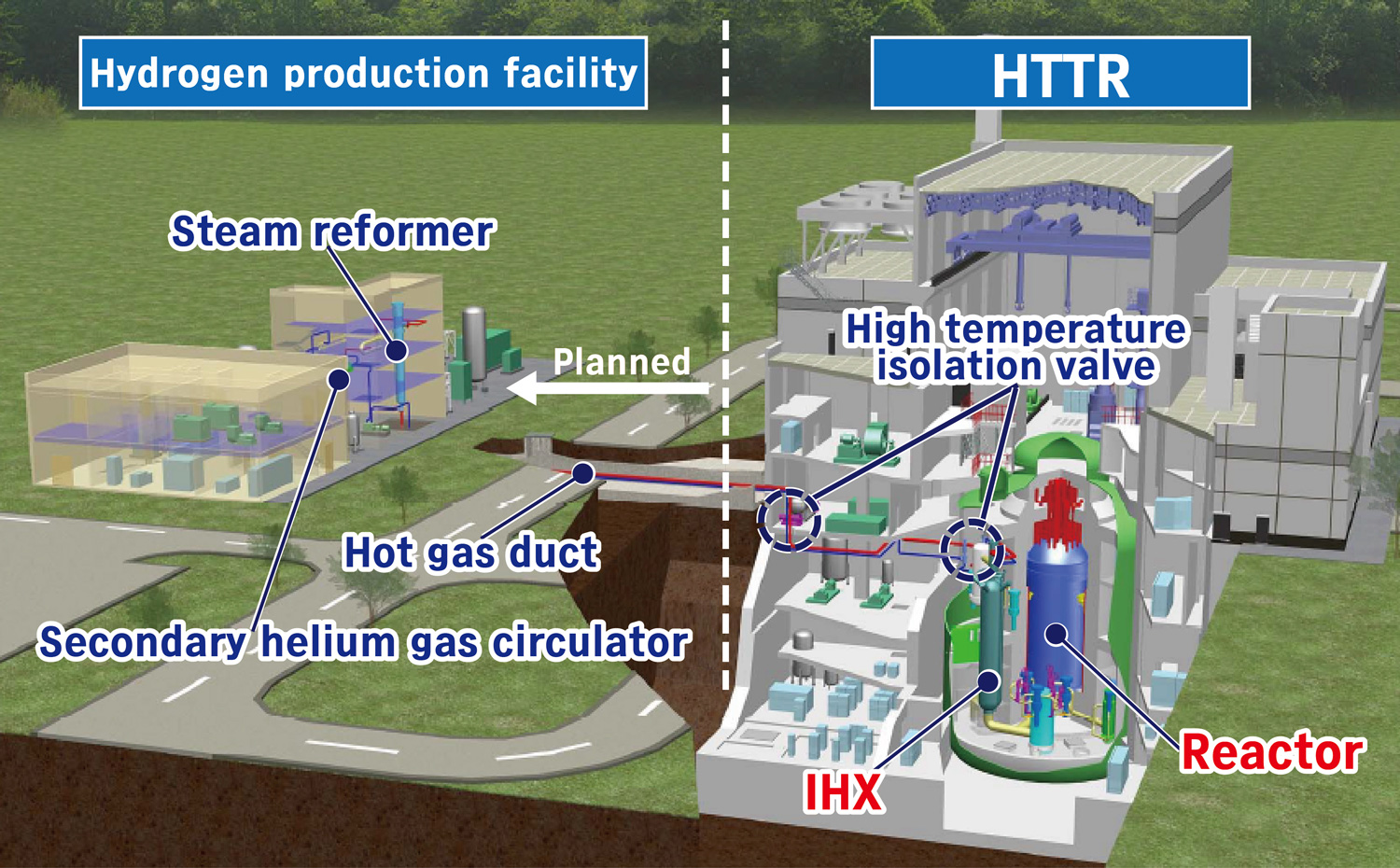Publication Date: July 15, 2025
Access counts:0
Development Plan for Coupling Equipment Between HTTR and Hydrogen Production Facility
-Efforts Towards a Hydrogen Society: Utilizing High Temperature Gas Reactors for Hydrogen Production-

Fig. 1 Layout image of HTTR heat application test plant

Fig. 2 Conceptual mechanical drawing of coupling equipment
Based on “Green Growth Strategy Through Achieving Carbon Neutrality in 2050,” JAEA has initiated an HTTR heat application test plan (Fig. 1) to couple a hydrogen production facility to the HTTR, with the aim of establishing coupling technology and evaluation methods that achieve a high level of safety for coupling a hydrogen production facility to an HTGR. The basic design for the coupling equipment to couple the HTTR and the hydrogen production facility has been implemented, and a development plan has been formulated.
The coupling equipment (Fig. 2) is composed of high temperature isolation valves to prevent the leakage of radioactive materials from the nuclear facility, a secondary helium gas circulator to feed high temperature helium gas, and a hot gas duct to transport high temperature helium gas to a hydrogen production facility. The development plan for these components is as follows. For the development of the high-temperature isolation valve, it was found necessary to optimize the shut-off surface pressure and select welding conditions to achieve the required seal performance and prevent adhesion between the valve body and seat during shut-off behavior. For the development of the secondary helium circulation machine, it was found necessary to conduct element verification tests in a helium environment on the magnetic bearings, high-speed motor, and aerodynamic section (impeller) with a view towards future large-capacity applications and to meet the required performance specifications. For the development of the hot gas duct, it was found necessary to measure the heat transfer characteristic data of the candidate insulation material in a helium environment and verify the construction method in order to use a new insulation material.
Based on these results, the required specifications for each connected facility device will be clarified.
If you have any comments or feedback about this page, please click the button to share your thoughts with us.
